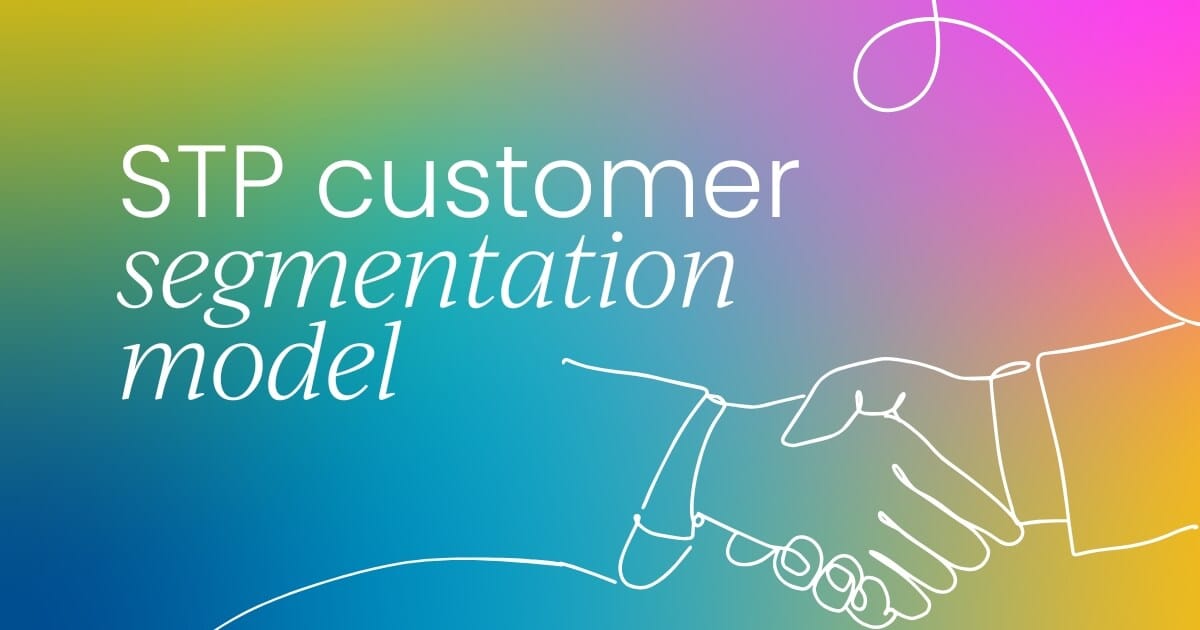This article was transcribed from Cate Vanasse’s talk at last year's Boston Customer Marketing Summit. If you have a membership, you can watch the full thing here.
When I became the new Director of Global Customer Marketing at a growing SaaS company, I found myself reflecting on the road that brought me here - a road that twisted and turned through single-product and multi-product environments at companies like Expedia and Cisco.
If there's one key lesson I've learned, it's the paramount importance of strategic dexterity for customer marketers.
Whether you're a one-person team marketing a single product or you're juggling an entire portfolio, the ability to nimbly shift strategies is make-or-break. And trust me, I've been at both ends of that spectrum (and everywhere in between!).
So when the organizers of this customer marketing conference approached me to give a talk on maneuvering between single-product and multi-product environments, I knew I had to share my personal playbook for building strategic dexterity.
Pivoting to a multi-product world
After COVID's disruption of the corporate travel industry, I joined Cisco Meraki in 2021 to build their customer marketing function from the ground up. Meraki felt like a return to my startup roots - a small, scrappy team within the larger Cisco empire.
Except this time, instead of just one product, we were marketing Meraki's full cloud networking portfolio.
Two years later, I was promoted to lead customer marketing for approximately 75% of Cisco's product lines. Suddenly, I found myself going from that comfortable three-product Meraki world to the biggest challenge of my career - hundreds of SKUs across diverse product categories.
That's when everything I had learned about strategic dexterity was put to the ultimate test. How could I bridge product marketing's deep technical expertise with the customer intimacy of customer marketing? How could we unify discrete product strategies into cohesive customer-first campaigns at scale?
As overwhelming as that shift was, I realized strategic dexterity really boils down to prioritization and relentless focus. When you're facing insurmountable options, you have to get ruthlessly selective about where to invest your limited time and money.
Segmentation: Mapping the ‘mountain’ of opportunity
The first step, whether you're marketing one product or hundreds, is to step back and map out the total landscape. Who comprises your total addressable market? What are your benchmarks for success - customer acquisitions, walletshare growth, etc.?
From there, you need to analyze different ways to segment that market into targetable groups with shared needs.
In B2B, some of the most common segmentation criteria include:
- Firmographics: Company size, industry, geography
- Customer tiers: Aligning pricing/packaging with realized value
- Behavioral: Product usage, churn risk factors
- Key/Strategic accounts: Specific high-value targets
- Buyer personas: Decision-maker roles and influences
The segmentation ‘recipes’ will look radically different for each product line. Maybe for Product A, you'll want to zero in on a specific industry like healthcare. For Product B, it could make more sense to prioritize by company size and maturity. There's no one-size-fits-all.
To illustrate this, let's use the analogy of mapping out mountain biking trails. Your total addressable market is the entire mountain filled with trails. Segmentation is analyzing all of those trails and grouping them into "areas" with common attributes like difficulty levels and terrain. It creates an easy-to-follow trail map.

Targeting: Picking the right trail
Once you have that mapped out, the next step is homing in on which specific trail - or prioritized segment - you want to explore for a while. This could be the insanely technical downhills only experts should attempt, or the scenic paths perfect for cross-selling current customers.
The key is being selective and focused, rather than bogging yourself down trying to cover every trail simultaneously. It's about identifying which type of customers you're truly best positioned to attract and serve profitably.
To use another analogy from my former life - when Marketo first pioneered lead scoring, it was a game-changer. Finally, we could intelligently target the ‘sweet spot’ where buyer interest and our own priority criteria overlapped. That's the same core challenge with targeting, whether for one product or multiple products.
Understanding the voice of the customer
However, even with that critical prioritization in place, successfully navigating between single and multi-product environments requires another key capability - deeply understanding the nuances of customer sentiment.
Time and again, I've seen companies put so much emphasis on analyzing products, features, and firmographics that they forget customers are human beings with vastly different tastes and needs. Just because a logo has a high NPS score doesn't automatically make them a great advocate for your full product portfolio.
I learned this the hard way at Cisco Meraki. We were so excited to get this incredible, renowned CTO to present on behalf of our products. Despite multiple requests, she kept declining.
It wasn't until we met with her in person that we realized her hesitation - while she loved part of our product set, she felt uncomfortable overtly promoting other parts.
From that experience, I realized how important it is to not just track customer sentiment with a binary "yes/no" for advocacy. You need to understand the nuances - what specifically are they fans of? What do they dislike? Under what conditions might they feel uncomfortable being a customer reference?
Because at the end of the day, your goal as a customer marketer is to showcase authentic customer success through programs like:
- Case studies/success stories
- Reference calls
- Speaking engagements
- Review generation
- Co-marketing
- User groups/advisory boards
You can only accomplish that if you've built a true understanding of your customer as an individual beyond just a company name or score.
Luckily, there are lots of ways to keep your finger on the voice of the customer pulse:
- Customer advisory boards
- Briefing centers that capture 1:1 feedback
- Social media monitoring of your top accounts
- Partnerships with customer success teams
- Continuously updating your reference management database
The bigger picture for strategic dexterity
Of course, mastering segmentation, targeting, and the voice of the customer are just part of the strategic dexterity equation. You also need the ability to fluidly adjust your tactics and team based on the situation at hand.
When I was a solo marketer handling everything from content to pipeline, my strategic dexterity was focused on getting maximum leverage out of that very limited scope.
- What's the most impactful use of my single hour and dollar budget?
- How can I drive the biggest return with zero budget whatsoever?
In that scenario, deep focusing and prioritization weren't just nice-to-haves - they were essential for survival.
On the flip side, when I was overseeing customer marketing for the bulk of Cisco's product portfolio, strategic dexterity looked very different. It was about constantly cross-pollinating between teams working on different products to identify those natural complementary stories.
We had to become masters of:
Aligning messaging across products
One of the biggest challenges we faced was translating Cisco's strategic vision of offering tightly integrated solutions into cohesive customer-facing messaging.
Rather than operating in silos where each product told its own story, we needed an elevated narrative that conveyed the "better together" value across different offerings.
To accomplish this, we leaned heavily on orchestrating consistent voice-of-customer programs like advisory boards and customer evidence capture. This gave us a continuous pulse on the topics and use cases that resonated across our portfolio.
With that centralized messaging framework in place, customer marketers for each product had the strategic dexterity to customize execution based on the nuances of their target segment, market, and unique customer journey.
Storytelling on the product websites could zigzag between individual product benefits and the integrated solution's business impact.

Cross-functional alignment at scale
Another major learning? A need for exceptional cross-functional partnerships to coordinate these interweaving multi-product initiatives. There's no way my team could have succeeded operating in a silo - we had to strategically lock arms with:
- Product marketing: They lived and breathed the roadmaps, features, and positioning that fueled our content
- Portfolio/solutions marketing: Their elevated vantage point shaped the master narrative we localized
- Customer success: They surfaced ongoing voice-of-customer intel from the frontlines
- Executive field marketers: Mobilizing that central messaging across regional go-to-market engines
Rather than reinvent the wheel or overstep boundaries, we leveraged each group's core expertise through consistent processes:
- A quarterly "story hit list" prioritizing the integrated use cases we needed customer evidence for (based on segmentation inputs)
- Customer marketing requests managing the content creation workstreams
- Centrally-led customer marketing planning to ensure global enablement
This constant communication cadence ensured our single mission - giving customers a world-class experience at every stage of their journey.
Diverse skills and staffing
Coordinating all these interconnected moving parts also required strategically building my customer marketing team's versatility. In addition to skilled communicators who could translate technical depths into compelling stories, we needed:
- Voice-of-customer experts able to develop relationships and mine true insights
- Data-driven analysts comfortable with market segmentation models and measurement
- Project managers to expertly choreograph our global content operations
- Strategic thinkers who could be elevated from individual tactics to portfolio-level impacts
And we had to be agile in how we structured that talent based on the escalating scope. When I first joined Cisco Meraki, we were just a handful of generalists supporting one product family.
As our mandate rapidly expanded, we had to evolve into job-specific roles:
- Customer story creators focused on just developing case studies and other evidence assets. They weren't accountable for the actual writing - we leaned on creative agency partners for that execution.
- Customer marketing campaigns managers brought omnichannel expertise to activate our stories through the right channels for each segment.
- Customer reference managers built rapport with advocates and maintained a rich centralized database of their permissions and preferences.
At the core, my customer marketing leads served as the connective tissue between these functions and our cross-functional counterparts.
The through-line? No matter how specialized we got, everyone had to maintain strategic dexterity as an individualist one day and a nerd the next. That's the very essence of customer marketing.
Never stop learning and evolving
If there's one constant in our profession, it's that the learning never stops. Just when I felt like I had finally achieved strategic dexterity, the ground would shift again with new reorgs, new products, and new strategies.
That's why it's so invaluable to participate in professional events like this customer marketing conference. We're able to constantly exchange new ideas, case studies, and approaches for extending our strategic agility muscle.
For example, I was inspired by one CMO's creative approach to mobilizing their distributed teams for unified customer storytelling. When I inevitably encounter similar growing pains in my next role, I'll be able to bring that example to the table.
Or the team who has cracked the code on quantifying the business impact of their case studies and references. Having those benchmarks gives me a fresh way to position the value of customer marketing to my future executives.
The questions I had walking in have been answered tenfold by the generous insights shared here. And in turn, I hope my own experiences have provided some helpful frameworks for any of you facing inflection points around strategic dexterity.
My encouragement? Stay humble, keep evolving, and never lose sight of that fundamental prioritization principle that has grounded me throughout my career:
If you only have one hour and one dollar...how are you going to invest it to drive maximum impact for your customers?
As long as we relentlessly ask (and answer) that question, customer marketing will remain strong and strategically dexterous.
Want to hear more from Cate? Chat with your peers on our community Slack channel. Or if you're more of an in-person kind of networker, have a peek of our global event calendar, marking out all our unmissable events this year.


 9 min read
9 min read
 Follow us on LinkedIn
Follow us on LinkedIn





